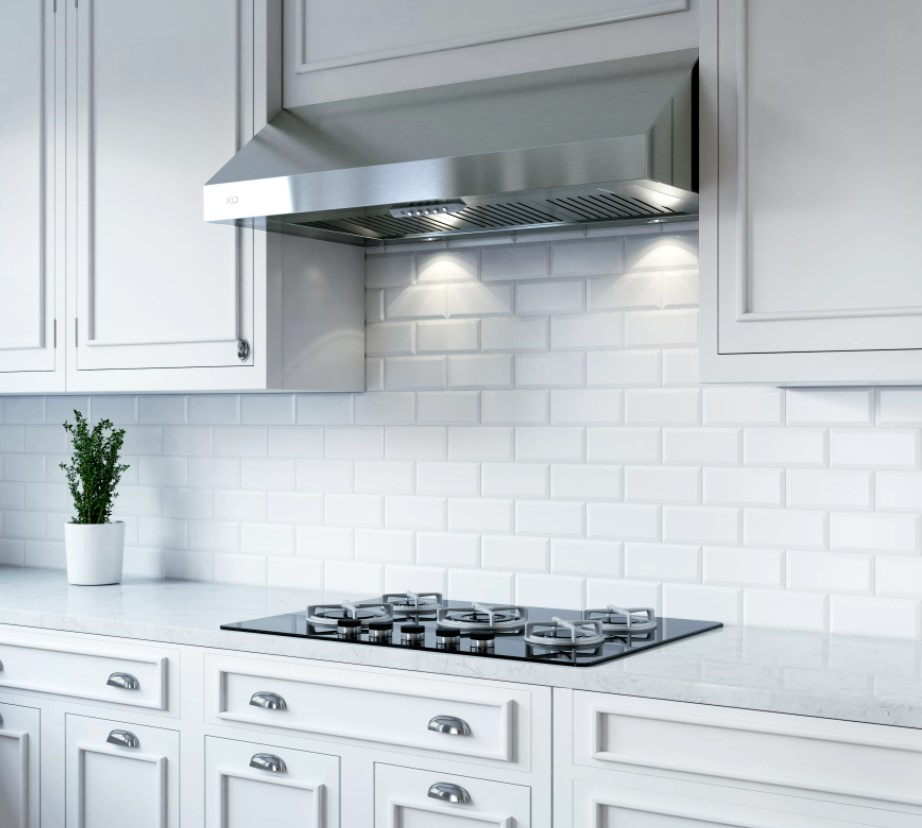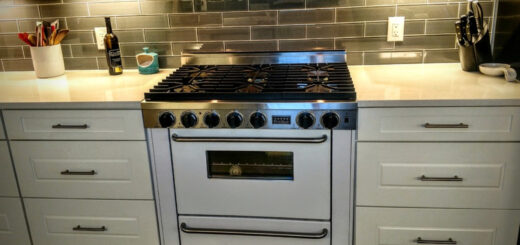Maintain A Kitchen Hood

Steps To Maintain A Kitchen Hood:
1.Know How to Troubleshoot
Troubleshooting a range hood is easy. To check if your range hood is functioning like it should, turn it off for a few minutes and then turn it back on. Make sure the range hood isn’t making too much noise. If you hear a lot of noise, there may be an issue with your fan or motor.
If everything sounds normal, move on to check the lights. Switch them on and off. If the range hood doesn’t light up, you may need to change the bulbs or have the wiring examined.
Finally, check the range hood’s performance. Is the range hood sucking away odors and fumes? If you’re finding that gases and smoke linger even with the appliance at the highest speed, you likely need to remove grease from the system. (More on that below!).
2.Regularly Clean the Filters:
How you clean your filters depends on the type of filter you have. If your metal filters aren’t dishwasher safe or you just want to give them a deeper cleaning, place them in a water-safe container such as a large bowl. You may want to place each filter in a different container to ensure you have enough room to submerge them completely.
Fill the container with hot water and a degreasing solution, such as Dawn dishwasher soap. You can also add a ¼ cup of baking soda for extra cleaning power. Allow the filters to sit in the solution so the grease can dissolve and break down. Use a scrub brush to gently remove any grease remnants. Once the grease is gone, rinse the filter completely with warm water. Dry the filters with a microfiber cloth. Be sure to allow the filters to dry completely before placing them back in the range hood.
For charcoal filters, it’s best to just replace the filters. Replace them bi-monthly or as soon as you notice they are losing effectiveness.
3.Clean the Body of the Range Hood:

Maintaining your range hood’s body will prevent any leftover residue from leaving marks and stains. Start by turning off the range hood and your stovetop. The stovetop should be completely cool before cleaning the range hood.
Wipe down the body in the same direction of the grain using a soft microfiber towel and a non-abrasive household cleaning solution.
If the range hood’s exterior is dirty, you can use a warm soapy solution to clean with a soft sponge. Do not use a sponge with a scratchy surface. Be sure to rinse the outside with clean water. Then, finish with a stainless-steel cleaner to polish and keep the exterior sparkling.
4.Check the Vent:
If the airflow of your range hood seems restricted, check the vent. Grease can build up and affect performance. This can also cause a fire hazard, so it’s very important to have grease removed by a professional if you do detect it.
5.Clean the Fan Blades:
Dirt, debris, and grease can also build up on your fan blades. This will affect your range hood’s performance and tax the motor. Cleaning the fans on a regular basis will keep your motor from burning out.
Start by turning off the range hood. Again, make sure the stovetop is off and cool to the touch. Use soapy water and a non-abrasive rag to wipe down the fan blades. Rinse thoroughly with a clean rag and water. You can also use a solution of equal parts, ammonia and water to clean the fan. Carefully scrub the fans, rinse with clean water, and let dry before use.
6.Use the Range Hood Appropriately:
Range hoods are powerful appliances. You don’t always need to use the maximum setting when you are cooking. Choose the setting based on your cooking needs. If you are making a stir-fry, the highest setting is best for extracting all of the grease. Using the proper setting will help to maintain your motor and performance.
With all the work range hoods do, keeping them in good shape sure is easy! You’ll be glad you invested a little time in routine cleaning and maintenance to maintain excellent performance.
TYPE OF FILTERS:
All range hoods have a filter to trap oil and grease from cooking.
A.Aluminum (mesh) filters:
They are horizontal most of the time, collecting the oil on the surface, causing the color of the filter to change (to grey or brown color). Set your dishwasher to ‘GENTLE’ cycle when dish-washing this type filters.
B. Baffle filters:
The BEST range hood filters on the market today, replaceable filters but in 99% keep their shiny look and good performance for many years. Usually made of the same 304 stainless steel material as the range hoods.
In many cases the baffle filters come with grease trap as well, and the filters are sloped towards the back, so any collected grease and moisture will drip in the grease collector at the back of the hood. Customers should clean the baffles and the grease channel once a month, or every 30 hours of operation.
C. Charcoal (carbon) filters:
Needed only for ductless applications, non-vented hoods. Non replaceable filters, for one time use only. Must be changed every 4 months for proper range hood performance.



